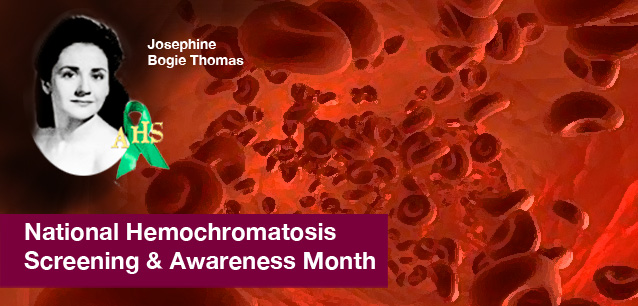 AD
AD
Today is: May 20
Scroll to explore events active on this date.
Additional Events on LEEP
LEEP INK FEATURES

Events in April 2025
Spring has sprung in the north, and the first hints of Autumn are on the horizon in the south. April is the month spring (or fall) gets underway, and it is filled with religious celebrations, including the Mu...

Metamorphic March: Trends and events in March 2025
Welcome to Spring or Autumn. This is a transitional month with something for everyone. Internationally, it is Women's History Month, focusing on the achievements, needs, and challenges that women ...

February Favorites
The world steps into the second month of 2025 with hope and trepidation. The United States has a new administration. Canada is finding its way to a new administration. Germany and several other European nations...
About National Hereditary Hemochromatosis Genetic Screening and Awareness Month
Ends: May 31, 2025
DESCRIPTION:
The American Hemochromatosis Society (AHS) champions National Hereditary Hemochromatosis Genetic Screening and Awareness Month in May; it previously ran in July. Canada conducts a similar campaign within their borders.
National Hereditary Hemochromatosis Genetic Screening and Awareness Month was founded in 1998 by Josephine Bogie Thomas, who succumbed to complications from the disease in 1999. AHS seeks to raise awareness and encourage people to get tested for Hereditary Hemochromatosis (HH), commonly called iron overload disease, iron storage disease, or genetic iron poisoning.
The Centers for Disease Control and Prevention lists Hereditary Hemochromatosis as America's most common genetic disease. One in eight people, or 33 million Americans, are carriers of the disease, and most don't know it. Mutations of the disease can manifest as full-blown Hereditary hemochromatosis. It can affect anyone, men, women, and children at any stage of life affect men, women, and children at any age.
Hereditary hemochromatosis is an inherited disorder that causes the body to absorb too much iron from the diet. The excess iron is then stored in various organs, such as the liver, heart, and pancreas, potentially leading to life-threatening conditions like liver disease, heart problems, and diabetes.
Mutations in the HFE gene cause the most common form of hereditary hemochromatosis. Early symptoms of the disorder may include joint pain, fatigue, and weakness. If left untreated, it can result in more severe health issues, including liver cirrhosis, heart failure, and diabetes. Early detection and treatment can help prevent or reduce complications.
Genetic screening for hereditary hemochromatosis is crucial, particularly for individuals of Northern European descent, who are more likely to carry HFE gene mutations. Screening involves a blood test for elevated iron levels and specific gene mutations. If the condition is diagnosed early, treatment can be as simple as regular blood donations or therapeutic phlebotomy to remove excess iron from the body.
VIDEOS
SUPPORTING DOCUMENTS
ADDITIONAL IMAGES
Where would you like to go now?
 AD
AD
By using this site. You are agreeing to use of cookies. Learn more in our Privacy Policy


/footer-logo.svg)
